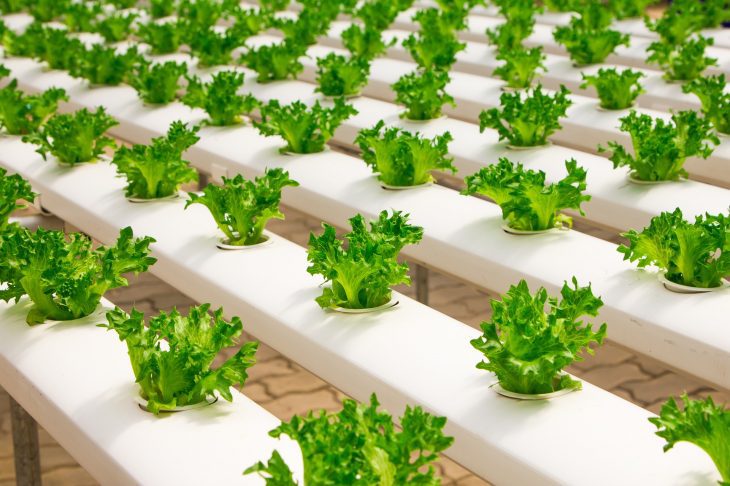Nutrient film technique hydroponic systems

What is the nutrient film technique hydroponics
Nutrient film technique is a Continuous-flow solution culture. A very shallow stream of nutrient solution is recirculated in a thin layer past a bare root mat of plants in a watertight channel, with an upper surface exposed to air. Unlike with deep water culture hydroponics, a stream (or “film”) of nutrient solution flows over the ends of their roots.
When was the nutrient film technique invented?
Developed in the 1960s by Dr. Allen Cooper, the NFT hydroponic system is mostly used for leafy greens like lettuce. NFT was first described by Dr. Allen Cooper in his book, ABC of NFT – Filled with detailed charts, graphs, and analysis, this book explains the practical applications and processes of the “Nutrient Film Technique”. The Nutrient Film Technique was first studied at Glasshouse Crops Research Institute in Littlehampton, England in the 1960s.
Components of a Nutrient Film Tehnique Hydroponic System
Hoocho explains how to build an outside NFT hydroponic system using plastic pipes: what you’ll need, reforming the PVC ends, drilling holes, slope, running irrigation lines, irrigation flow rates.
The most common setup involves rain gutter pipes with holes to place the netcups with plants. The pipes are laid down at an angle, and nutrient solution is pumped to each pipe from a reservoir. It is recommended that slopes of 1:30 to 1:40 be used and flow rates for each gully should be 1 liter per minute. To prevent ponding in in locally depressed areas, channel length should not exceed 10–15 meters.
- Channel System:
- Channels or Gutter System: These are usually shallow, sloping channels or gutters where a thin film of nutrient solution flows over the plant roots. They have holes where the plants are placed in netcups.
- Support Structure: Framework or structure that holds the channels at an inclined angle.
- Nutrient Reservoir:
- A container that holds the nutrient solution, which is pumped to the channels.
- Submersible Pump:
- Responsible for circulating and delivering the nutrient solution from the reservoir to the upper end of the channels.
- Tubing and Fittings:
- PVC or flexible tubing that transports the nutrient solution from the pump to the channels.
- Fittings such as connectors, elbows, and tees to ensure proper plumbing.
- Growing Medium and Net Pots::
- A growing medium to support plant roots within the channels. Common options include rock wool.
- Containers or support structures for holding individual plants within the nutrient film.
- Return Pipe:
- As it passes through the gutter system the nutrient solution returns to the reservoir after passing over the plant roots.
- Timer:
- A timer is needed to controls the pump to ensure intermittent flow of nutrient solution through the channels and prevent overflows
- Lighting System (if used indoors):
- Artificial lighting may be required if the NFT system is operated in an indoor environment with insufficient natural light.
There are multiple ways to setup the gutters depending on the available conditions. There are solutions to make space efficient Nutrient film technique system like place the pipes above the nutrient reservoir
An even more space efficient NFT hydroponic system would be to place the PVC pipes on shelves and make a vertical hydroponic system
Commercial hydroponic NFT growing systems
Green Automation’s shows us an automated growing system optimized for head lettuce production. The system is designed for growing head lettuces and herbs that are sold with their root ball (living lettuce) in a pot or as cut head lettuce.
HolaFresh was established in Australia in 1991 and has an impressive range of herbs grown using the NFT hydroponic system: Baby Spinach Basil Bay Leaves Chives Continental Parsley Coriander Curry Leaves Dill Kaffir Lime Leaves Lemongrass Lemon Thyme Marjoram Mint Oregano Parsley Rocket Rosemary Sage Tarragon Thyme Watercress
Both systems presented above take advantage of the natural light, therefore they cover a wide area.
Nutrient film hydroponic advantages
- one of the main advantages of NFT systems is that they require relatively little water, as the nutrient solution is constantly recirculated and only a small amount of water is lost through evaporation and transpiration.
- less prone to root rot as the roots are not submerged into water
Nutrient film hydroponic disadvantages
- it takes more space than a deep water culture hydroponic system as you need to lay down pipes in an angle
- Risk of drying out: Because the roots of the plants are suspended in the air and not submerged in water, they can dry out quickly if you have a failing pump
- doesn’t work well for plants with big roots or plants that need a lot of support
CropKing NFT 4-6 Hydroponic Leafy Greens Growing
The CropKing NFT 4-6 is an introductory system designed to ease growers into using the nutrient film technique to grow hydroponic plants. Suitable for leafy crops such as lettuce and herbs, this systems arrives with everything you need to get started, except a reservoir.
Nutrient Film Technique hydroponic system maintenance
Maintenance for a NFT system is mostly about checking the nutrient solution and cleaning algae and overgrown roots that might block the water channels.






Leave a Reply